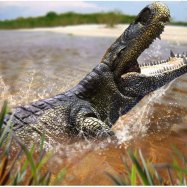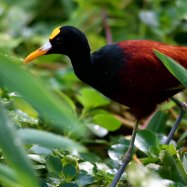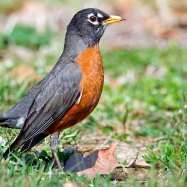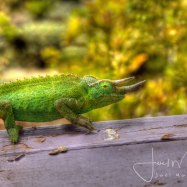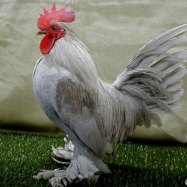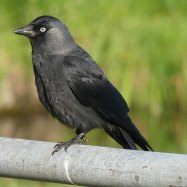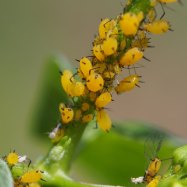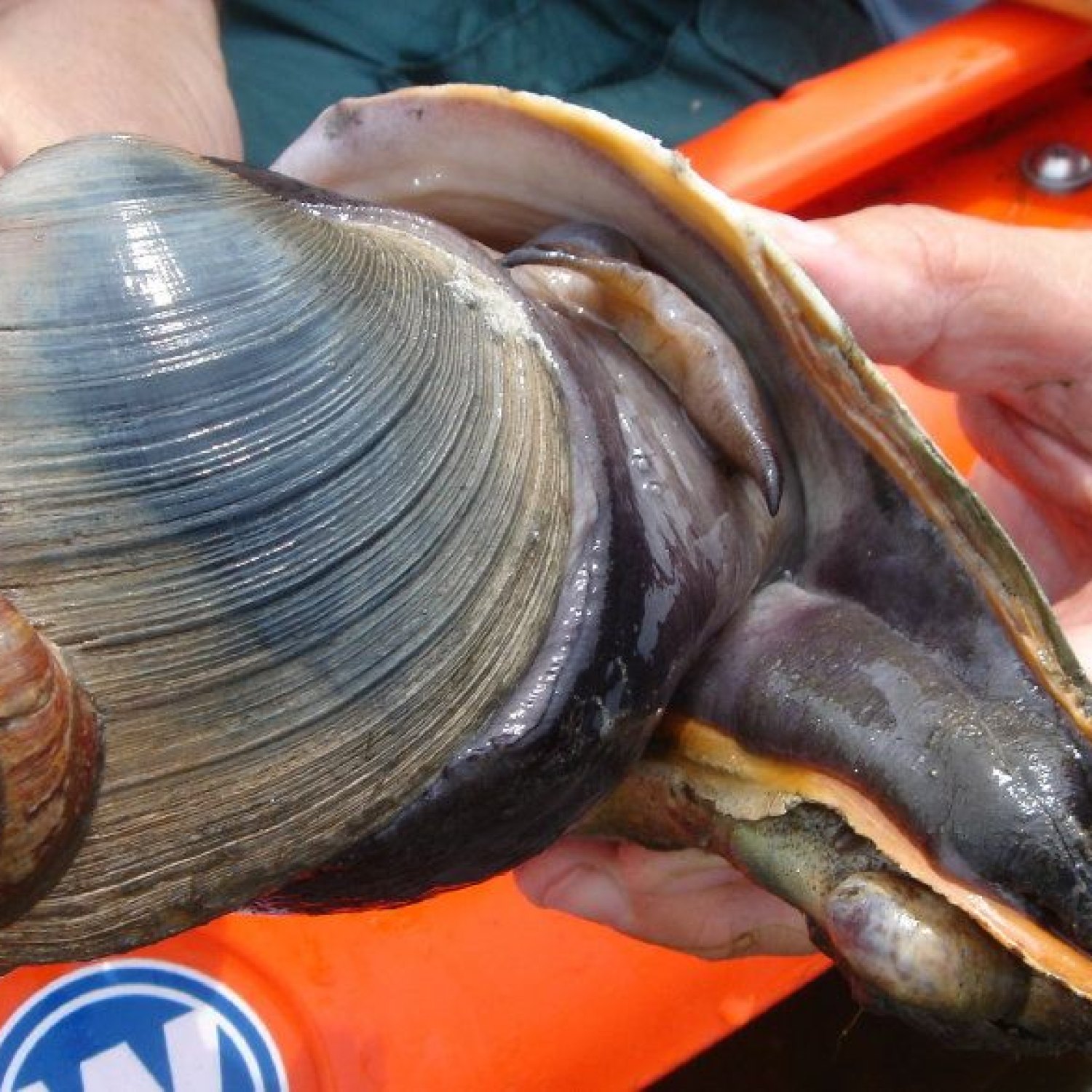
Quahog Clam
Up to 15 cm (6 inches)
Did you know that the Quahog Clam, also known as the hard clam, can grow up to 15 cm long and is found in coastal areas? This popular seafood delicacy belongs to the Veneridae family and has a rounded and symmetrical body shape. So next time you hit the beach, keep an eye out for this tasty creature! #QuahogClam #CoastalCreatures #SeafoodSensations
Animal Details Summary:
Common Name: Quahog Clam
Kingdom: Animalia
Habitat: Marine
The Fascinating World of the Quahog Clam: Discovering the Bivalve Wonder
The ocean is a vast and mysterious world, filled with a variety of animals from the tiniest plankton to the largest whale. Among these creatures is the Quahog clam, a bivalve that may not be as well-known as its ocean-dwelling counterparts, but still holds a special place in the marine ecosystem. From its scientific classification to its unique features and habitat, let us dive deep into the fascinating world of the Quahog clam.Mercenaria mercenaria, commonly known as the Quahog clam, is a bivalve mollusk that belongs to the Kingdom Animalia, Phylum Mollusca, and Class Bivalvia Quahog Clam. It is a species of edible clam highly valued for its meat, and its hard shell is used in jewelry and other decorative items. The Quahog clam is also known by other names such as chowder clam, hard-shell clam, or round clam. It belongs to the Order Veneroida and the Family Veneridae, making it closely related to other clams such as the Atlantic surf clam and the ocean quahog.
The Quahog clam is a marine animal, meaning it lives in saltwater habitats. Its natural distribution is on the North Atlantic coast of North America, specifically in the United States. It can be found along the coast, from the Gulf of St. Lawrence in Canada to the Gulf of Mexico, with the majority of its population located in the Mid-Atlantic region of the United States. It is commonly found in coastal areas, including bays, estuaries, and tidal mudflats. Due to its popularity as a food source, it is also commercially farmed in some areas Quetzalcoatlus Northropi.
One of the distinct features of the Quahog clam is its variable coloration. It can range from dark brown to grayish-white, with some individuals even having a purple hue. This color variation is due to the different amounts of iron and other minerals in the water where they live. These clams also have a unique body shape, being rounded and symmetrical. They are also relatively small compared to other bivalves, with a length of up to 15 cm (6 inches).
One of the most interesting facts about the Quahog clam is its feeding method. As a filter feeder, it obtains its food by filtering water and extracting microscopic organisms such as plankton and bacteria. It accomplishes this through its specialized gills, which have tiny hair-like structures that act as filters, trapping food particles. They are incredibly efficient in this process, with each clam capable of filtering up to eight gallons of water in a day. This feeding method also serves as food for other marine organisms, making the Quahog clam an essential part of the food chain in its ecosystem.
The Quahog clam is a prized food source for humans, with its meat often used in various dishes such as clam chowder, pasta, and steamed clams. However, it has also been an essential part of the culture and livelihood of Native American tribes for centuries. They are also considered a delicacy in certain countries, especially in the United States.
Aside from its value as food, the Quahog clam also has a significant role in the economy. Its hard shell, which is resilient and can withstand tough environmental conditions, is used in various industries such as jewelry making, and in the production of buttons, beads, and other decorative items. Some Native American tribes also use them as wampum, a traditional shell currency.
Despite being a commercially important species, the Quahog clam population has been declining due to overharvesting and pollution. In the 1980s, an incident known as the "Great Quahog War" occurred, when fishermen from Rhode Island and Massachusetts argued over fishing rights in Narragansett Bay. This incident highlighted the need for sustainable fishing practices and the protection of this vital marine species.
To ensure the conservation of the Quahog clam, various efforts have been made, such as regulating the size and number of clams that can be harvested, enforcing closed seasons for fishing, and monitoring water quality. There are also ongoing research and conservation programs that aim to study and preserve the Quahog clam population, as well as educate the public about this unique bivalve and the importance of its presence in the marine ecosystem.
In conclusion, the Quahog clam may not be as majestic as some other marine animals, but it holds a significant role in the ocean's delicate balance. As a filter feeder, it helps maintain the water's quality and acts as food for other marine organisms. Its hard shell is not just a source of food and income but also a symbol of cultural significance. Its decline and subsequent conservation efforts serve as a reminder of the importance of responsible fishing practices and protecting the ocean's diverse species. So the next time you see a Quahog clam, remember that there is more to this bivalve than meets the eye.

Quahog Clam
Animal Details Quahog Clam - Scientific Name: Mercenaria mercenaria
- Category: Animals Q
- Scientific Name: Mercenaria mercenaria
- Common Name: Quahog Clam
- Kingdom: Animalia
- Phylum: Mollusca
- Class: Bivalvia
- Order: Veneroida
- Family: Veneridae
- Habitat: Marine
- Feeding Method: Filter feeder
- Geographical Distribution: North Atlantic coast of North America
- Country of Origin: United States
- Location: Coastal areas
- Animal Coloration: Variable, ranging from dark brown to grayish-white
- Body Shape: Rounded and symmetrical
- Length: Up to 15 cm (6 inches)
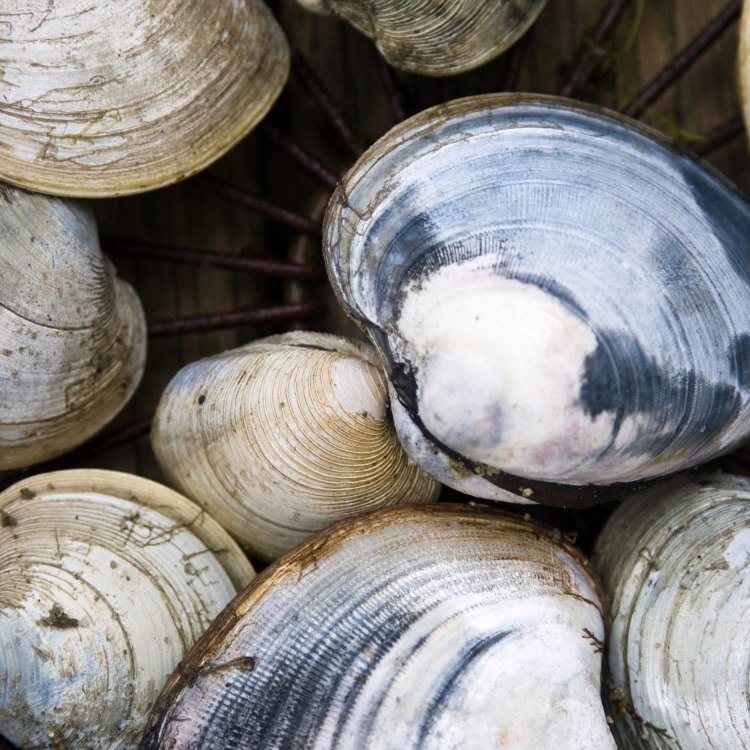
Quahog Clam
- Adult Size: 7-10 cm (2.8-4 inches)
- Average Lifespan: 20-30 years
- Reproduction: Sexual
- Reproductive Behavior: External fertilization
- Sound or Call: None
- Migration Pattern: None
- Social Groups: Solitary
- Behavior: Burrowing
- Threats: Overharvesting, pollution, habitat destruction
- Conservation Status: Least Concern
- Impact on Ecosystem: Filter feeding helps maintain water quality
- Human Use: Commercially harvested for food
- Distinctive Features: Hard shell, siphons for filter feeding
- Interesting Facts: Quahog clams are the official state shellfish of Rhode Island
- Predator: Sea stars, crabs, birds, fish
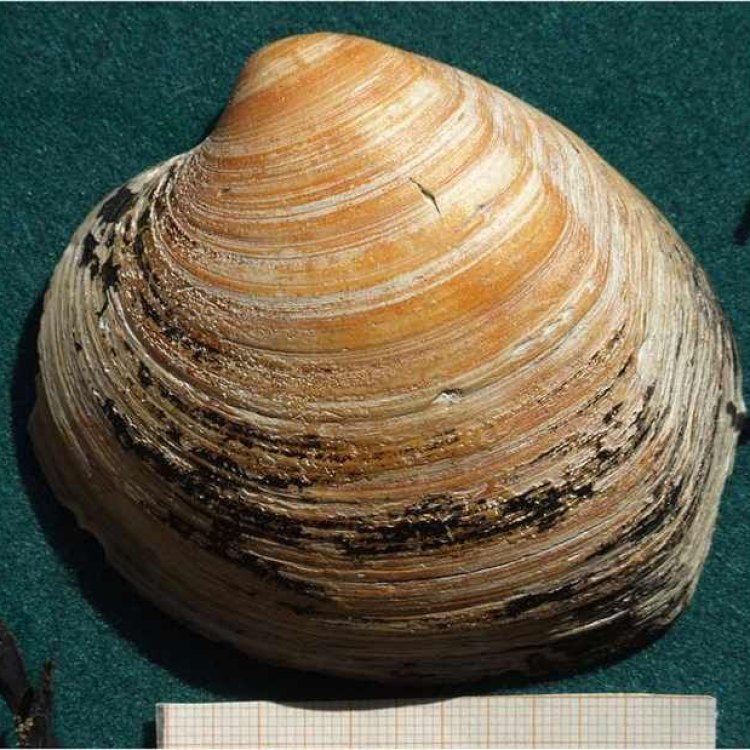
Mercenaria mercenaria
The Fascinating World of Quahog Clams: From Solitary Burrowers to Habitat Helpers
When it comes to seafood, most people are familiar with popular options like shrimp, salmon, and oysters. But there is one type of clam that often goes unnoticed despite its many unique features - the Quahog clam. Found along the Atlantic coast of North America, these clams are not only important commercially, but they also play a crucial role in their ecosystem. In this article, we will dive deep into the world of Quahog clams, exploring their behavior, threats, human uses, and interesting facts PeaceOfAnimals.Com.Getting to Know the Quahog Clam
Before we delve into the fascinating world of Quahog clams, let's first get to know these creatures a little better. Scientifically known as Mercenaria mercenaria, Quahog clams are a species of hard-shell clams native to the coastal waters of North America. They are commonly found from the Gulf of St. Lawrence, Canada, to the Gulf of Mexico, with the highest concentrations in the Mid-Atlantic and New England regions of the United States.Adult Quahog clams typically range in size from 7-10 cm (2.8-4 inches) and have an average lifespan of 20-30 years - making them one of the longest-lived bivalves in the world. These clams are sexually reproducing, with both males and females releasing sperm and eggs into the water for external fertilization. But what makes Quahog clams truly unique is their reproductive behavior, which involves releasing their gametes at the same time as other individuals nearby, resulting in a mass spawning event.
Unlike other types of clams that can be noisy with their valves snapping shut, Quahogs are silent creatures and do not produce any sound or call Quagga. They also do not have a migration pattern and are known to be solitary animals, living and breeding on their own.
Behavior and Habitat
One of the most distinctive features of Quahog clams is their ability to burrow into the sediment, creating a safe and secure home for themselves. They use their strong foot to dig into the sand or mud, leaving behind a tell-tale hole that they can retract into when disturbed. This behavior not only protects them from predators but also helps them survive in changing tides and rough weather conditions.Quahog clams are filter feeders, meaning they use their siphons to draw in water and capture food particles such as algae, plankton, and detritus. These siphons also serve as a way for the clams to breathe, as they absorb oxygen from the water.
Threats to Quahog Clams
Like many other marine species, Quahog clams face numerous threats in their natural habitats. Overharvesting is a significant issue for these clams, as they are considered a delicacy in many parts of the world. Commercial harvesting of Quahog clams began in the 19th century and has continued steadily since then. The large size and longevity of the clams make them particularly vulnerable to overharvesting, as it takes many years for them to reach reproductive maturity.Pollution is another major threat to Quahog clams, especially in heavily industrialized areas along the Atlantic coast. The water quality and sediment can be contaminated by chemicals, heavy metals, and other pollutants, making it difficult for the clams to survive and thrive. Habitat destruction is also a concern, as coastal developments and dredging can disrupt their burrowing behavior and damage their fragile shells.
Conservation Status and Impact on Ecosystem
The International Union for Conservation of Nature (IUCN) lists Quahog clams as Least Concern, which means they are not currently considered to be at risk of extinction. However, this does not mean that these clams are not facing threats or that conservation efforts are unnecessary.Quahog clams play a crucial role in their ecosystem, acting as natural filters. As they feed on particles in the water, they help maintain water quality, promoting a healthy balance in the ecosystem. In fact, studies have shown that Quahog clams can filter up to 11 liters (3 gallons) of water per hour, making them an essential part of their habitat.
Human Uses and Interesting Facts
Quahog clams have been a commercially harvested species for centuries, with their shells being used by Native Americans as currency and for ornamental purposes. Today, these clams are widely consumed as seafood and are known for their slightly sweet and tender meat. In fact, they are a significant part of the culinary culture in areas such as New England, where they are used in dishes like clam chowder and stuffed quahogs.Apart from their commercial use, Quahog clams also hold cultural and historical significance. They are the official state shellfish of Rhode Island, and their shells have been used by Native Americans in crafting beads and decorations.
Predators of Quahog Clams
With their burrowing and shell defense mechanisms, Quahog clams have adapted well to protect themselves from predators. However, they do still have some natural enemies, including sea stars, crabs, birds, and some types of fish. Younger Quahogs are more vulnerable to predators, but as they grow and their shells harden, they become less desirable as prey. This, coupled with their burrowing behavior, helps them survive and thrive in their natural habitats.In Conclusion
The world of Quahog clams is certainly full of fascinating features and facts. From their unique reproductive behavior to their essential role in maintaining water quality and their commercial and cultural significance, there is no denying the importance of these clams. As threats such as overharvesting, pollution, and habitat destruction continue to loom, it is crucial to acknowledge and appreciate the role that Quahog clams play in their ecosystem and take steps to protect and conserve these remarkable creatures for generations to come.
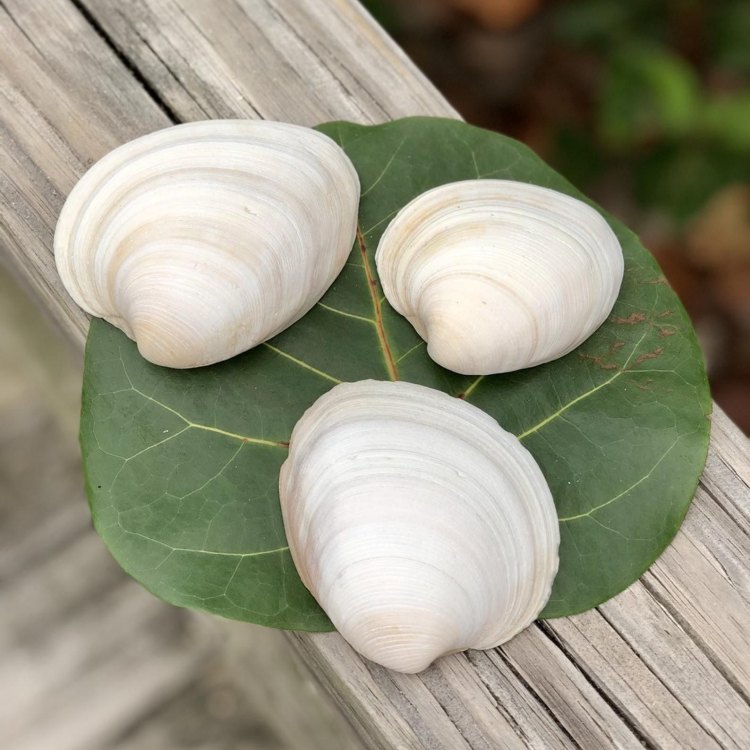
The Fascinating World of the Quahog Clam: Discovering the Bivalve Wonder
Disclaimer: The content provided is for informational purposes only. We cannot guarantee the accuracy of the information on this page 100%. All information provided here may change without prior notice.


